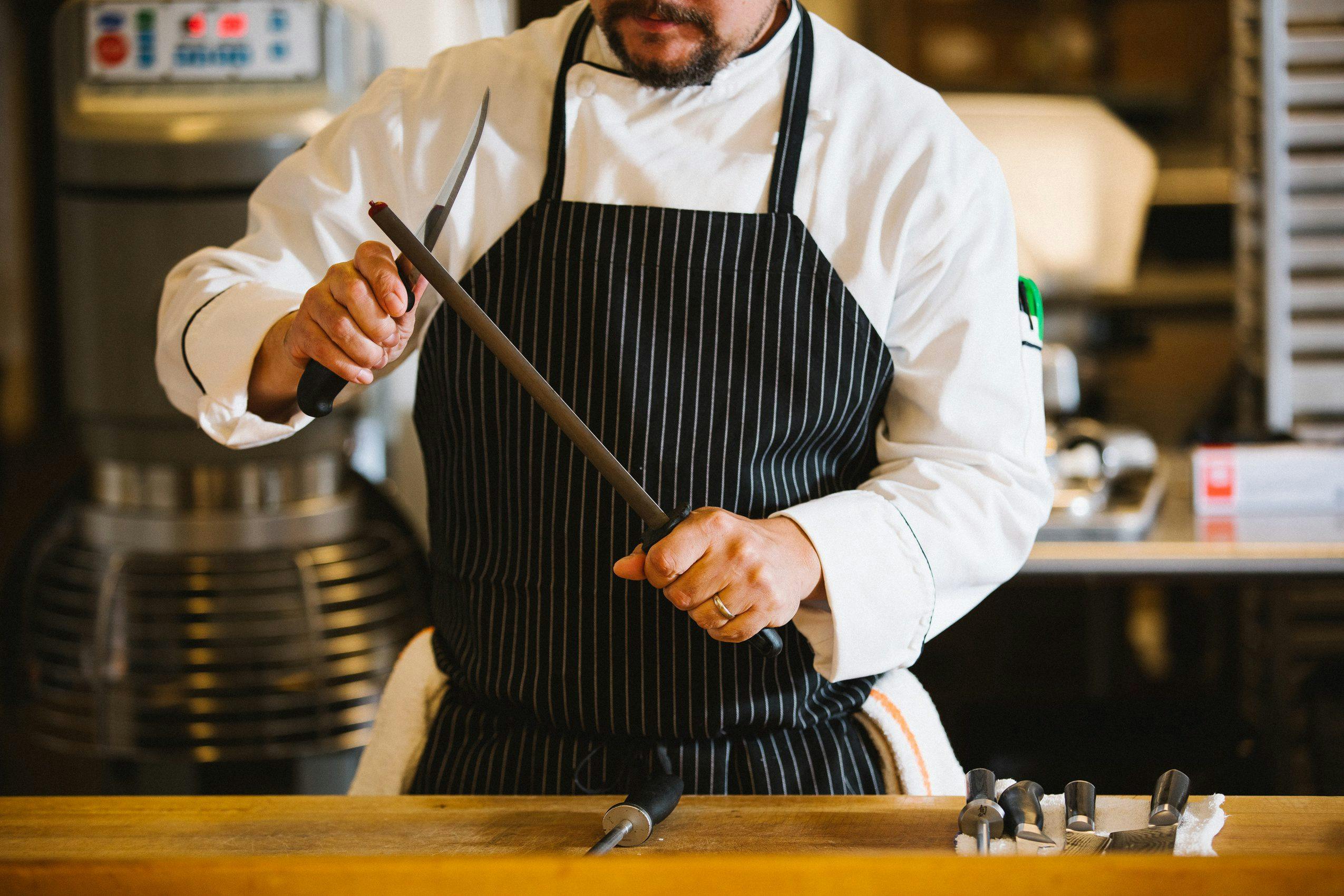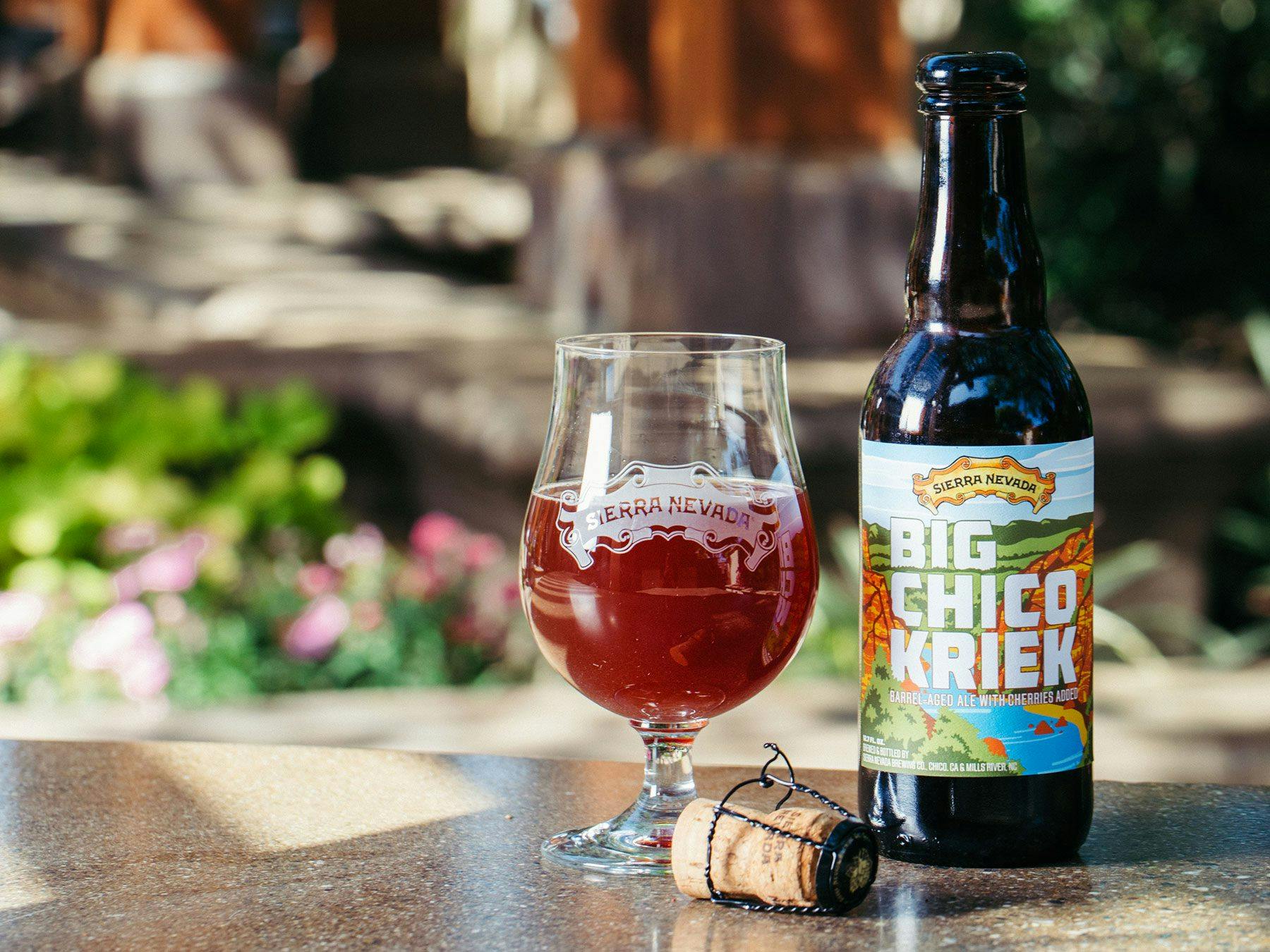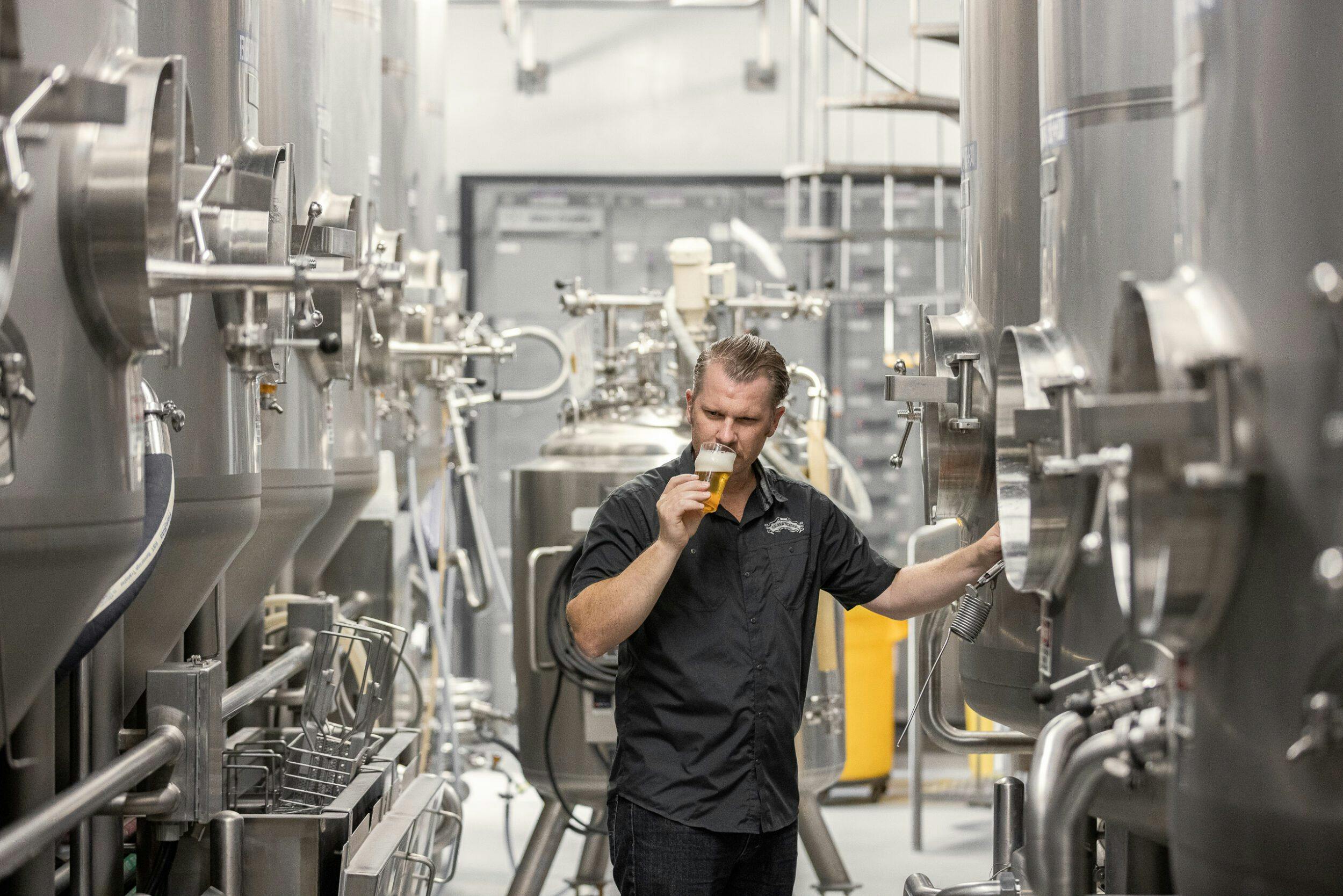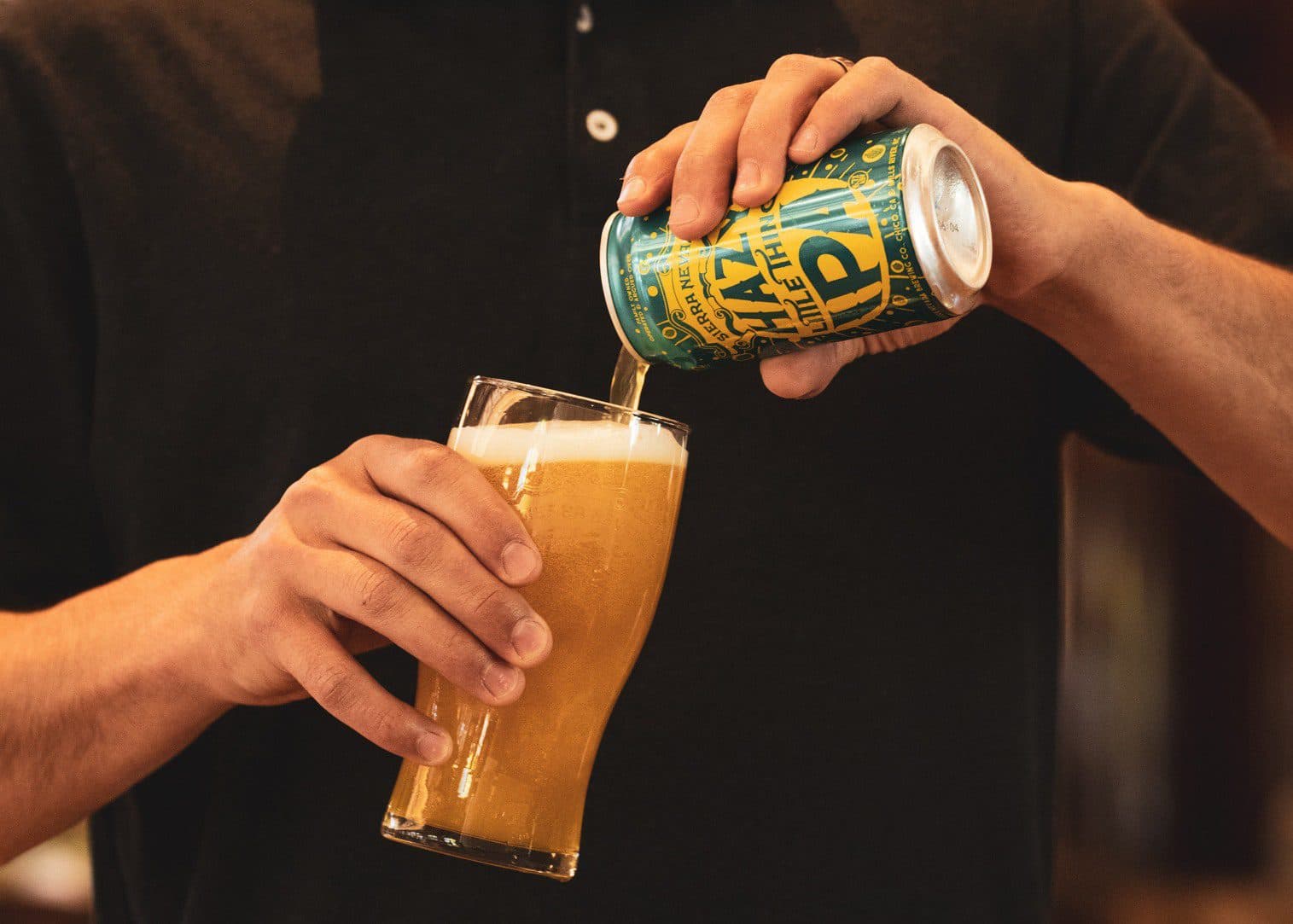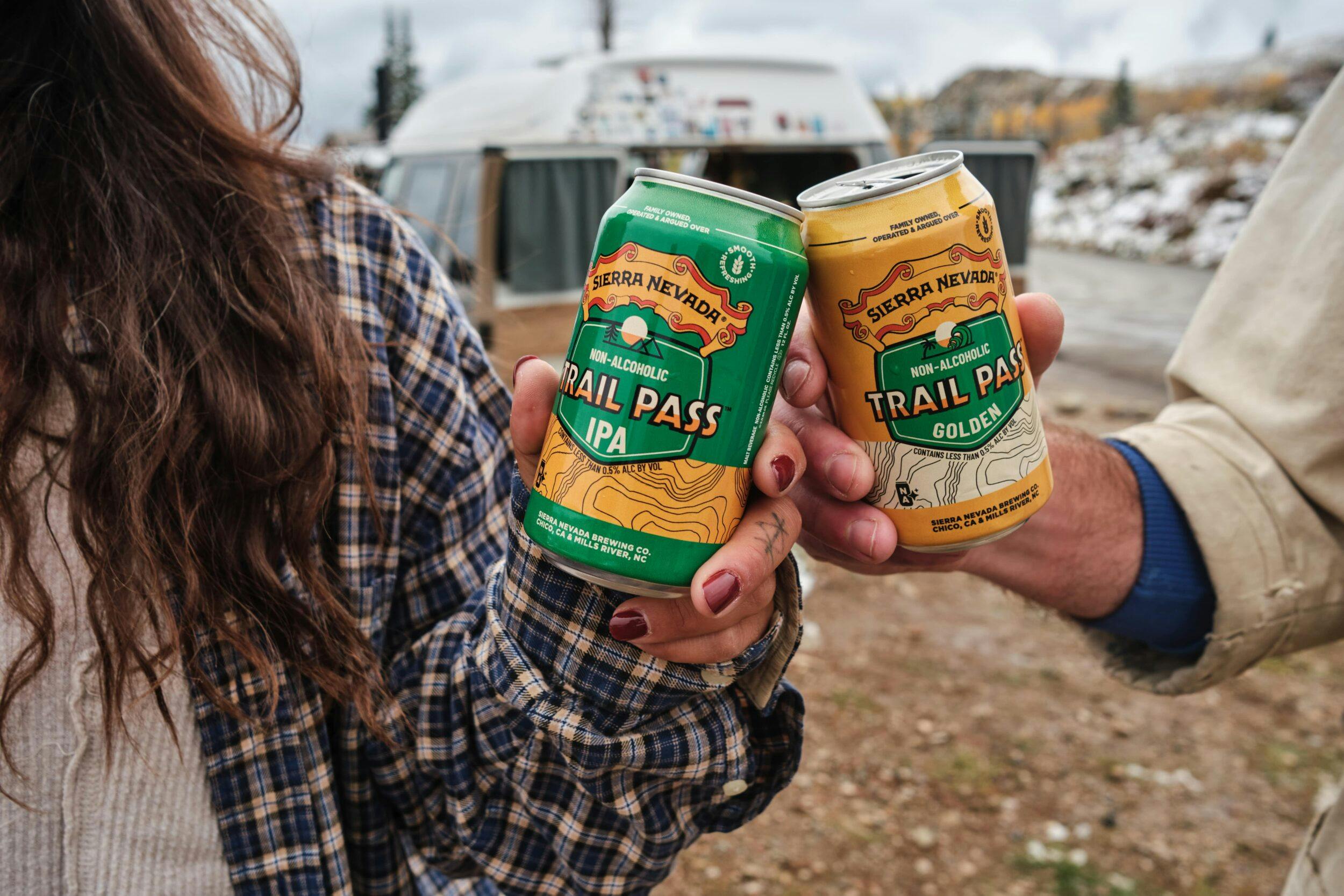Lunch is hours away, but our Taproom races toward it.
Bakers prepare 1,000 hamburger buns for the coming days. A line cook dices endless carrots. Our garden supervisor washes the morning harvest of greens. A stack of kegs heads to the beer cooler—then another, and another.
Surrounded by the action, Matt Hanbury stands calm before two sprawling tables of butcher block. He sharpens an impressive lineup of knives, focused.
“Sharp blades keep you from getting cut,” says Matt, a kitchen supervisor at our Taproom in Mills River, NC.
Dull blades, prone to slip or jump against resistance, would be useless anyway. Matt’s about to conduct a butchery class, showing five Taproom teammates how to break down a whole hog—an artful yet physical way to prepare pork.
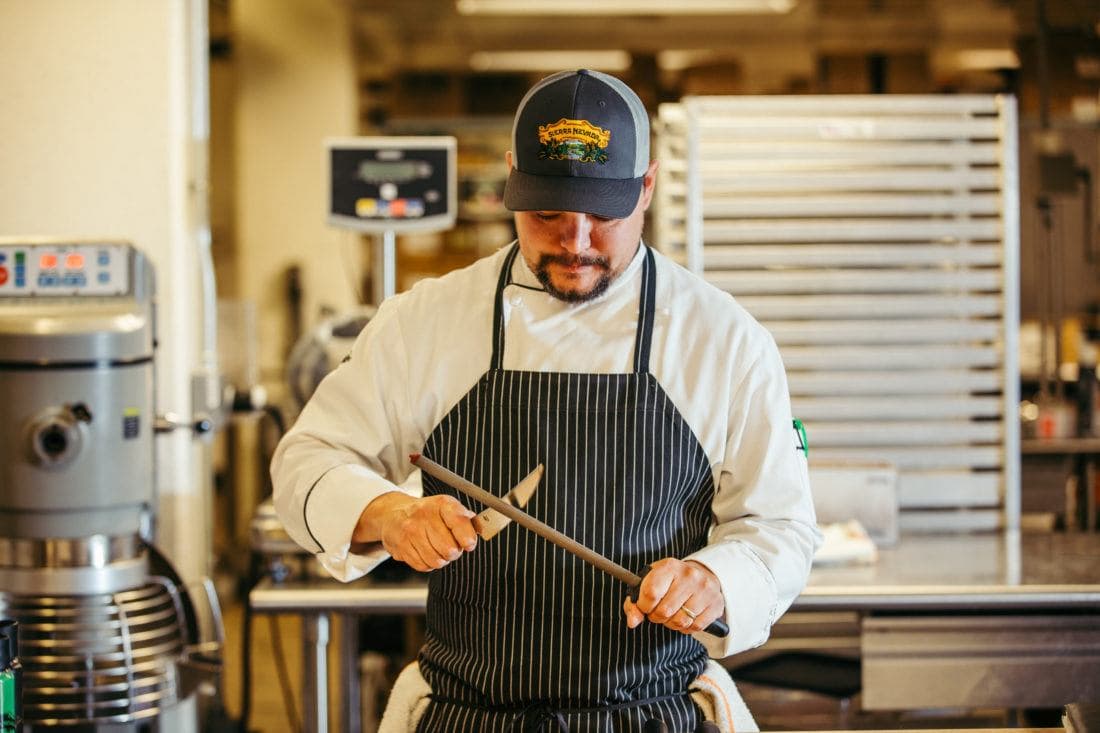
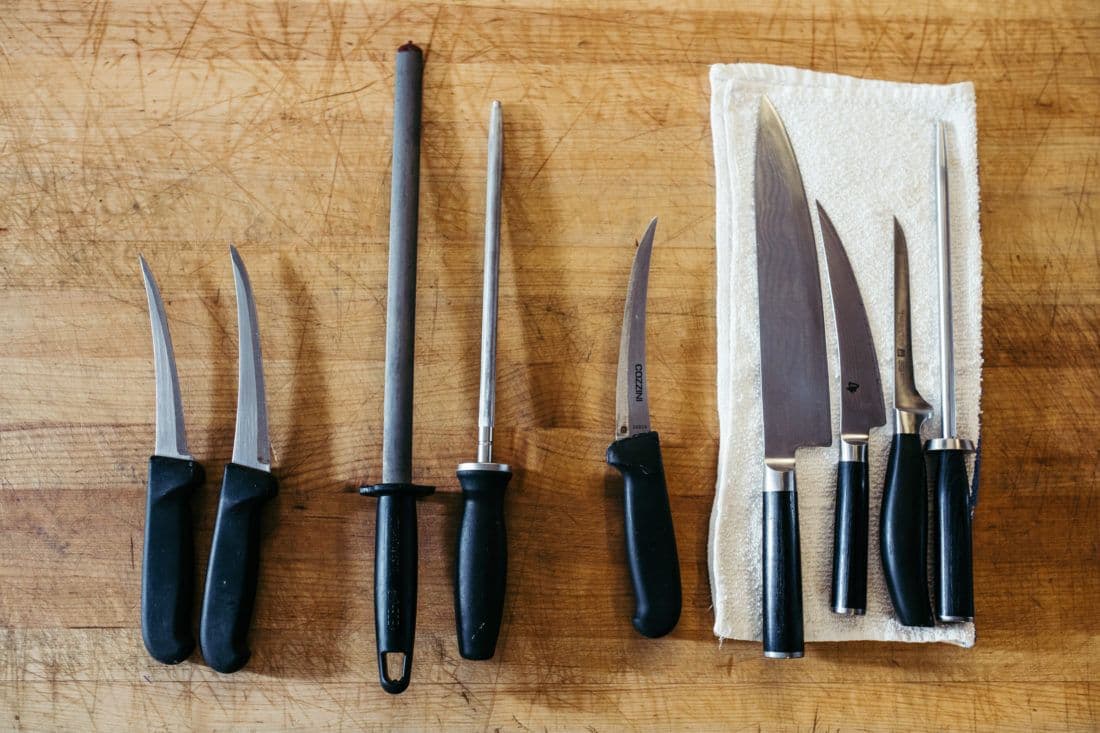
As the teammates show up, they get reacquainted.
“Hey, we’ve done two classes together now,” says Taproom server Jennifer Milton to Chris Narron, a line cook.
“Yeah, we did shrooms together,” Chris says, tongue fully in cheek.
Each spring at the brewery, we “inoculate” logs to grow organic mushrooms for the Taproom, and Jennifer and Chris learned all about it.
Growing mushrooms, whole-hog butchery—these classes are chances for the Taproom team to explore new skills. The list goes on: Pasta 101, Sausage Making, Stocks & Sauces, Cooking with Beer, and more.
And frankly, it’s a helpful change of pace. Our Taproom can seat nearly 500 people, and on busy days, we turn that over five or six times. The repetition in the kitchen can be tiresome.
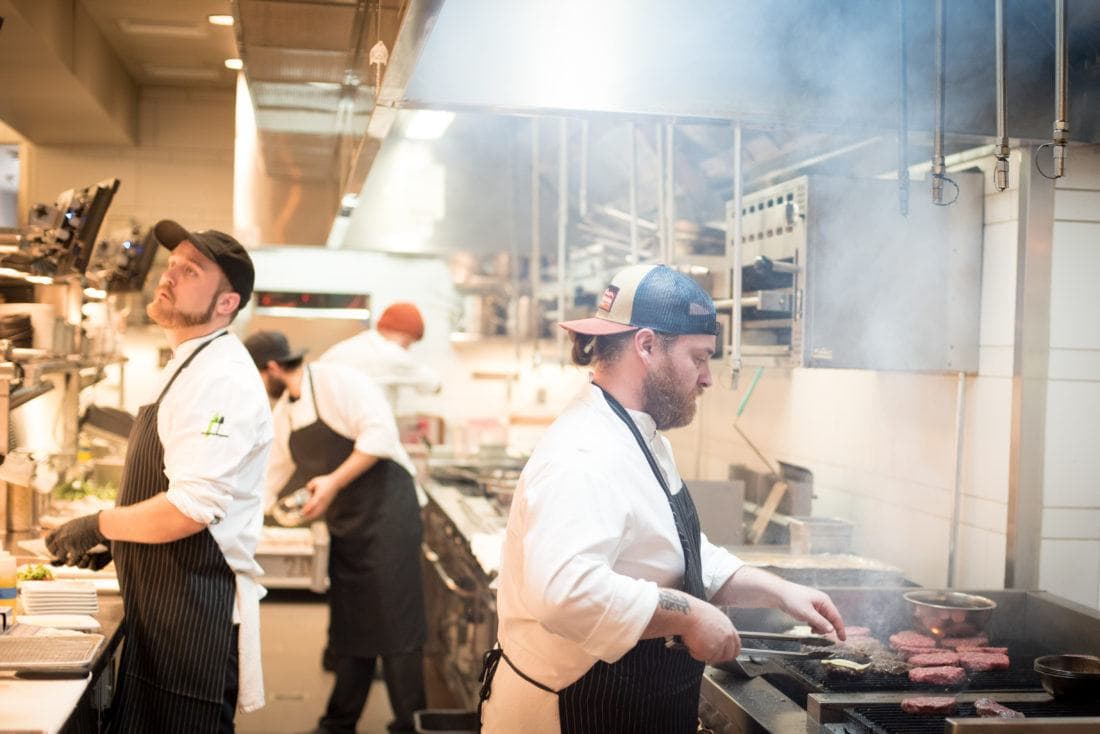
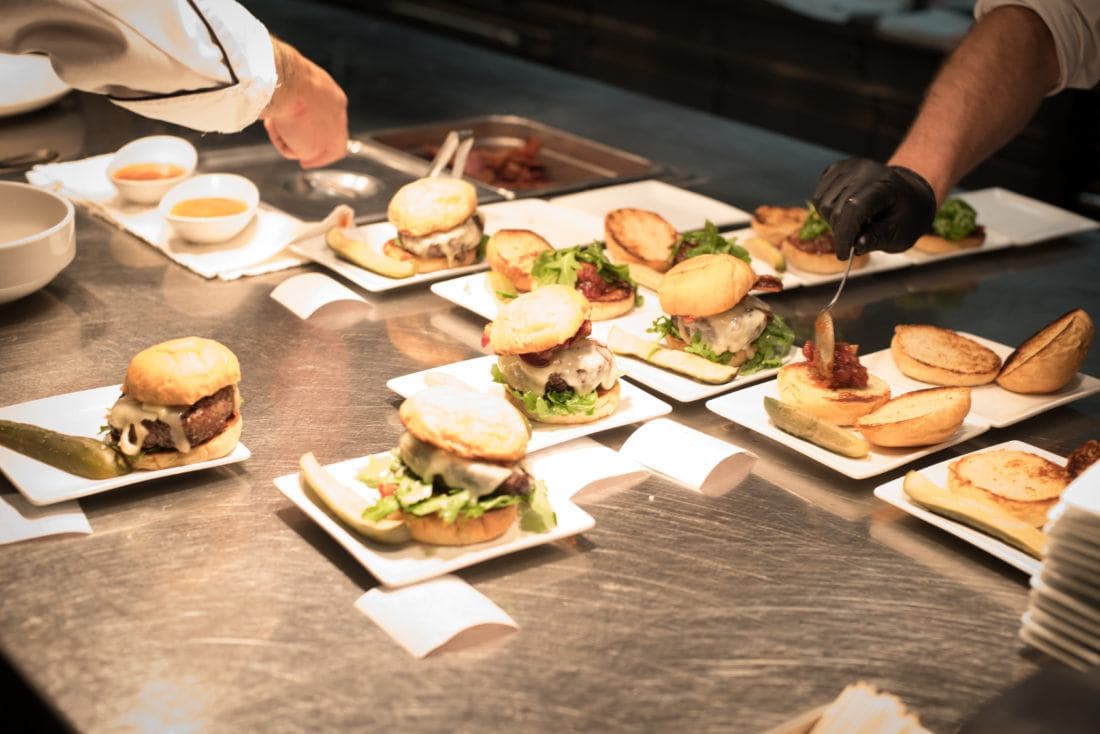
“These are folks who went to culinary school or they’re really passionate about cooking,” says Jessie Massie, executive chef in Mills River. “And then we serve so many burgers—we serve 2,500 burgers a week—so that’s just a lot of flipping burgers.”
Will Wittmeier didn’t get a culinary education (“It’s something I just fell into.”) but after years of on-the-job training, he’s a kitchen veteran. This whole-hog butchery class is a welcome shift.
“This is stuff you aren’t learning standing on a line all day,” he says.
And as Will stares at one-half of a 235-pound hog, he’s captivated.
“Just looking at how the anatomy goes together,” he says. “Fascinating.”
“This is stuff you aren’t learning standing on a line all day.”
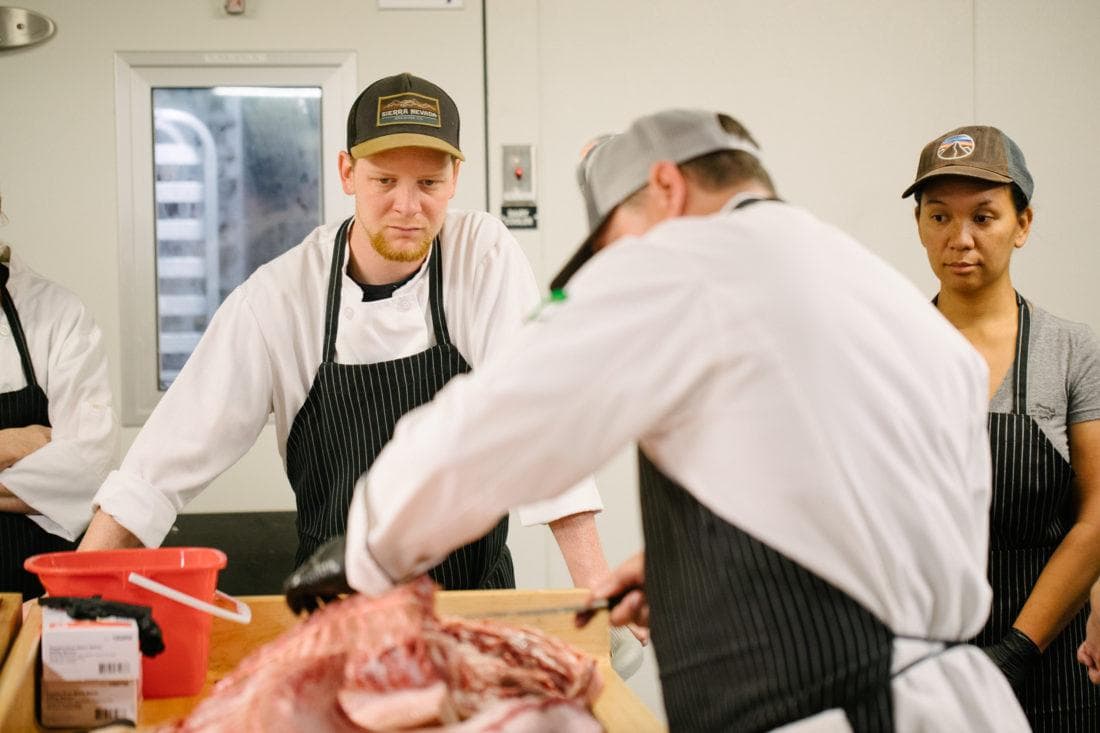
Class begins and Matt Hanbury dives right in, talking and teaching in real-time as he starts disassembling the first half-hog. (It’s up to the students to finish three additional halves—two entire hogs totaling 450 pounds.)
Matt came to Sierra Nevada with 13 years of experience, and he’s no stranger to busy restaurants. He once worked at the Starbucks corporate building in Seattle, Washington. Each day at 6 a.m., his team prepped food for 1,500 people, ready to start serving lunch at 11 a.m.
It was upon moving to Asheville, North Carolina, in 2016 that Matt got hands-on with whole hogs. He visited renowned local butchery Chop Shop where he learned the exacting craft of meat preparation.
That was more than 20 hogs ago, and while Matt won’t claim mastery, he values sharing his growing knowledge.
With most every cut, Matt explains where we might have seen, or tasted, that part of a hog before.
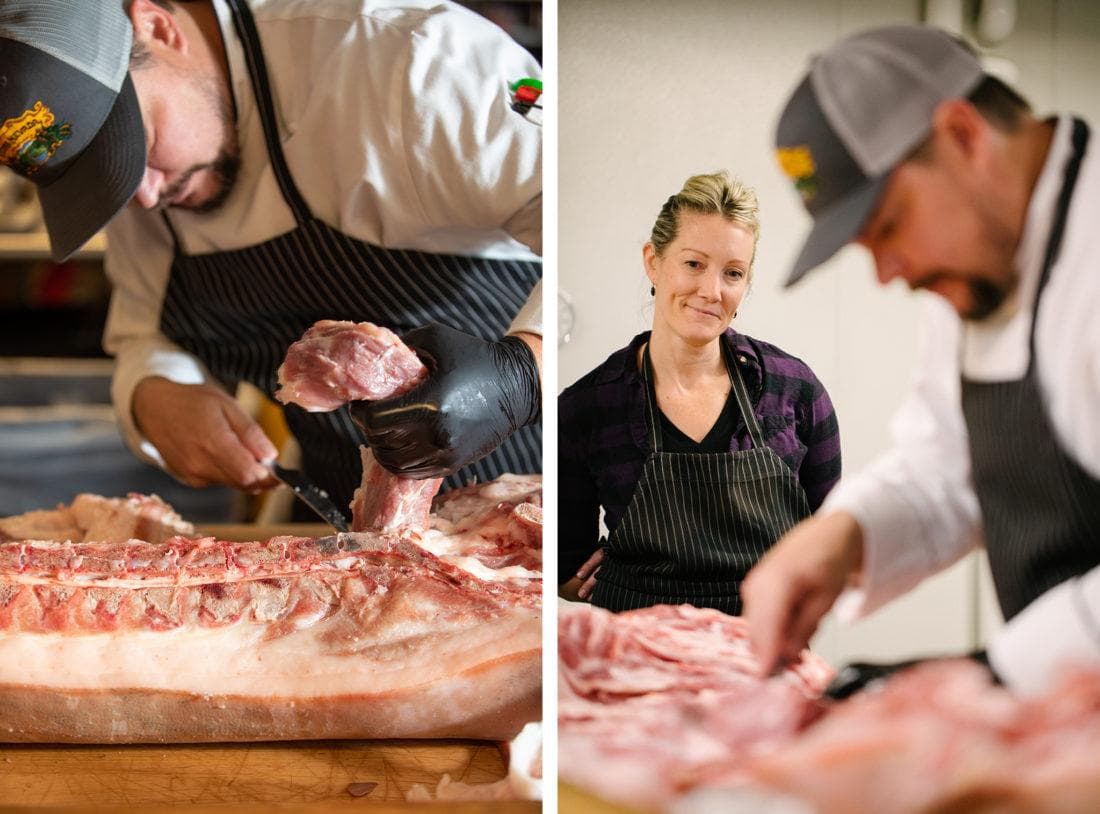
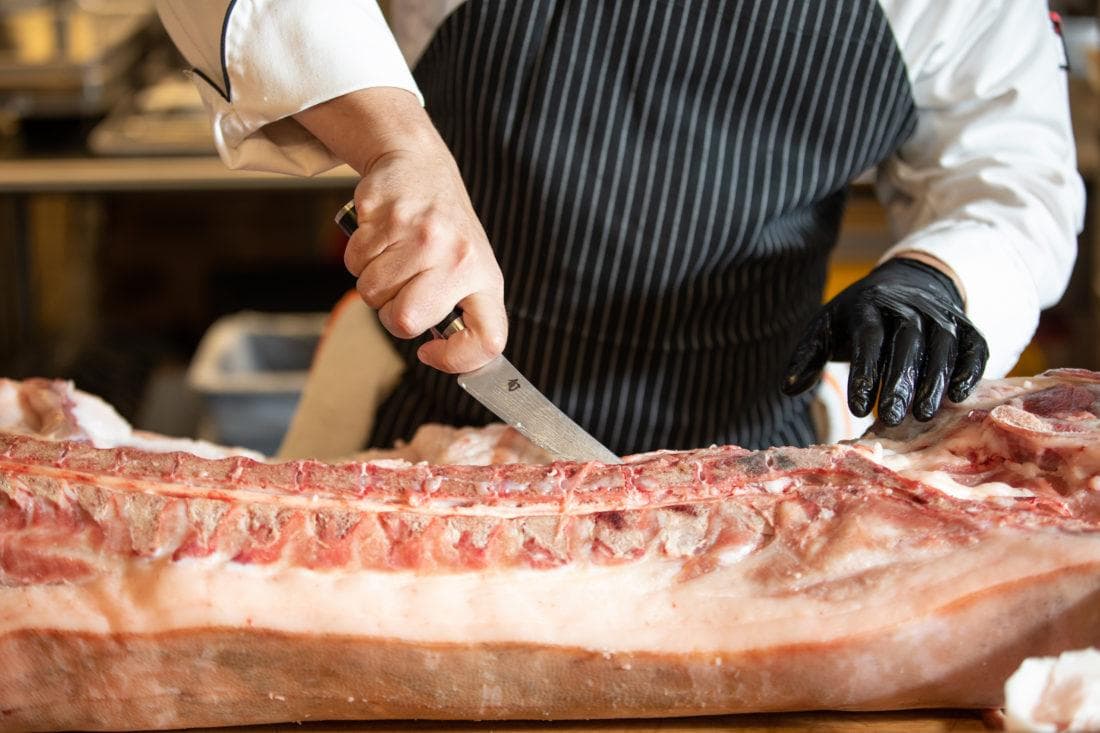
“This is a really good cut if anyone’s had guanciale,” he says, highlighting a portion from the cheek of the hog.
A staple in Italy, guanciale is seasoned, cured and often used in pasta dishes for its rich flavor. Matt’s go-to guanciale spices include salt, black pepper, ground red pepper, and juniper berry.
At the hog’s midsection, Matt makes shallow cuts to establish a seam, then slowly rolls out the loin. Its natural flavor isn’t that robust, he says; brines or marinades can transform pork loin into a knockout entrée.
Tucked behind the shoulder and below the back fat is an Italian treasure: secreto. This “secret” cut boasts remarkable tenderness and flavor, Matt says, and sometimes the butcher will keep it for themselves. Like a skirt steak, all secreto needs is a marinade and hard sear.
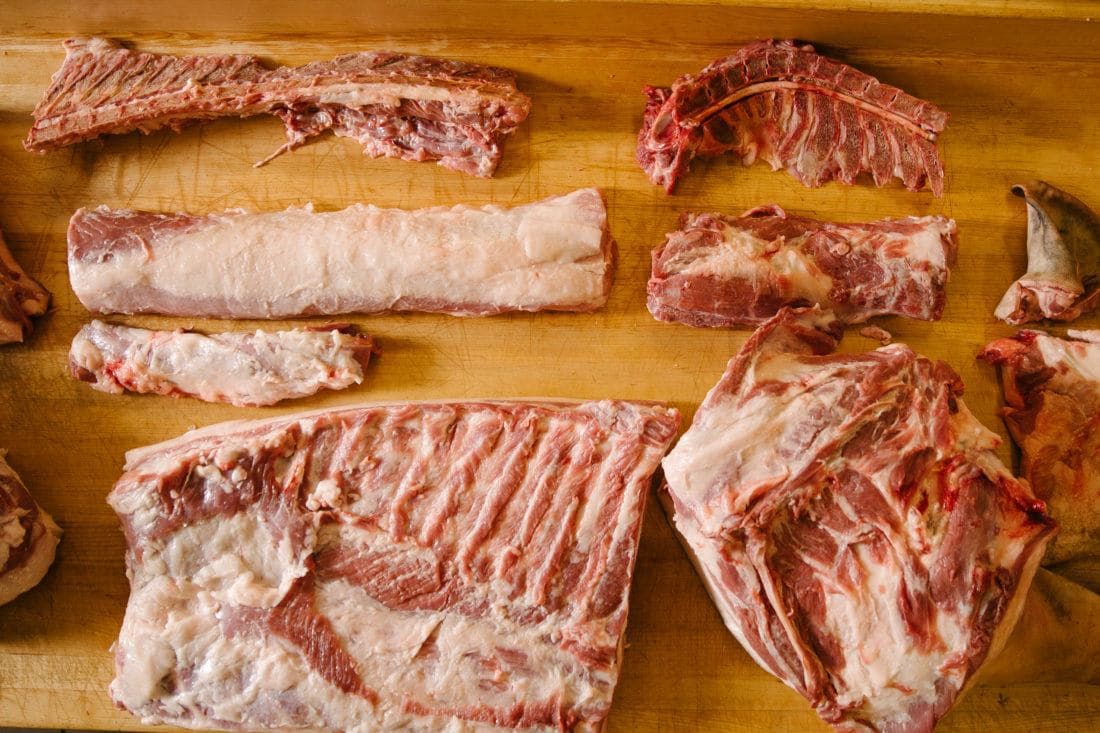
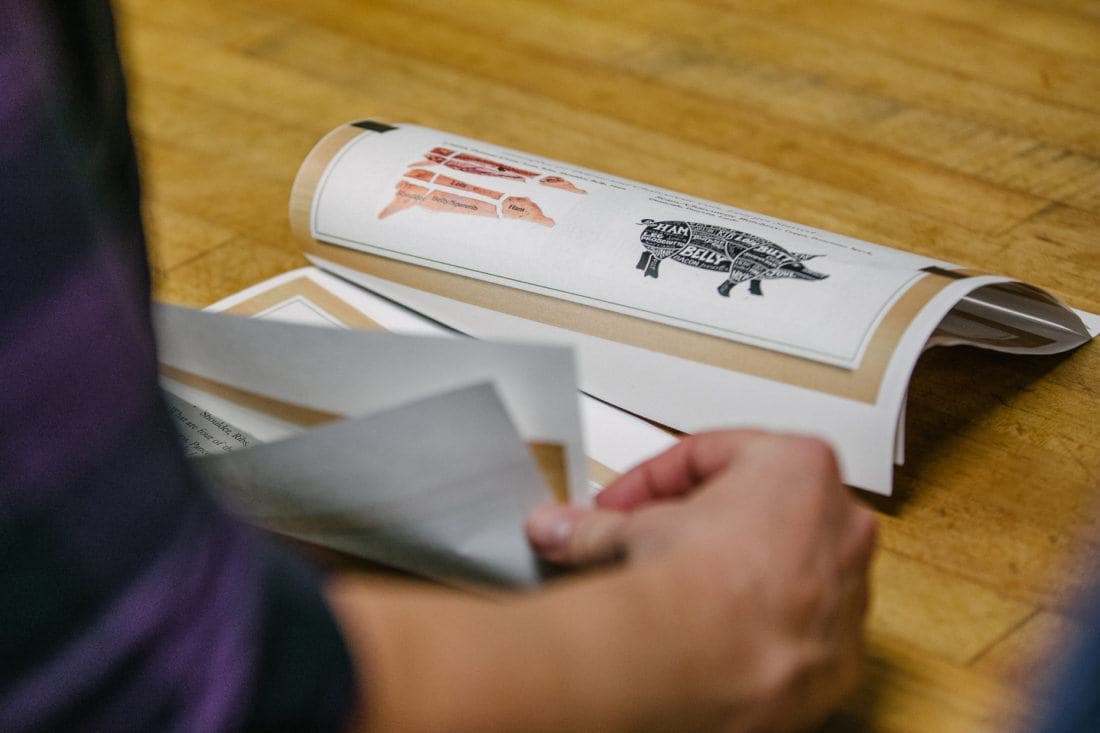
On and on Matt goes, sharing how even the most unlikely pieces have distinct uses.
That nondescript pile of white? It’s leaf lard, and a baker will gladly take it.
“If you’ve got a really good pie,” Matt says, “you’ve probably used leaf lard.”
It’s mostly tasteless, but leaf lard’s texture is prized for pie crusts and pastries.
How about the pig skin? Matt’s used it to roast homemade dog treats. And while aspiring tattoo artists might have brave and loyal friends, pig skin is another way to practice.
They’ll also bake the bones and create a stock, putting it toward sauces and braises, like the recent Oktoberfest braised pork shoulder.
“The ramen we had on the menu last winter used lots of these bones toward [the broth],” Matt says.
After 90 minutes of concentration and precision, Matt holds out one hand—a small mound of remnants in his palm.
That’s the waste. All of it.
Even in the unseen depths of our Taproom—a frantic place you might think is prime for compromise—the team prioritizes sustainability.
Executive chef Jessie Massie knows carbon outputs are significant when farming or raising animals on a large scale. It’s why our brewery gardens are committed to regenerative agriculture, why we purchase ingredients from more than 25 local farmers each year, and why our approach to meat is earnest.
“If we waste what the earth gives us or animals give us,” she says, “then the output is for nothing.”
“If we waste what the earth gives us or animals give us, then the output is for nothing.”
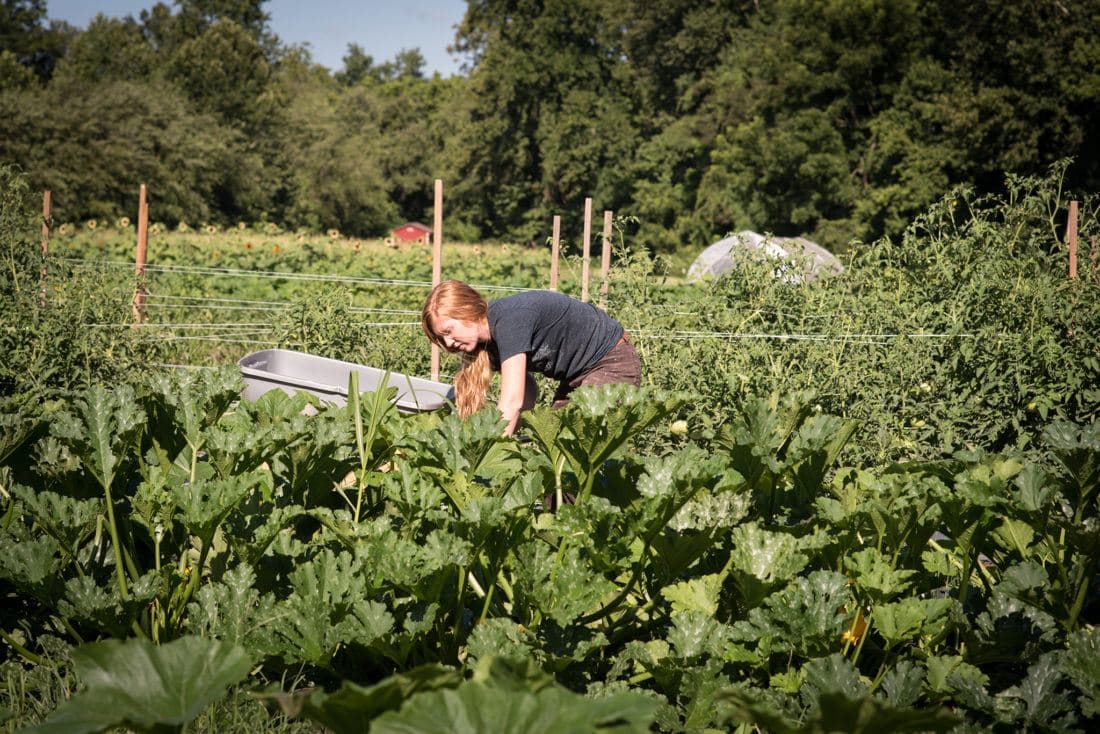
And Jessie says whole-hog butchery can sometimes be more sustainable financially. Buying specific cuts of meat doesn’t always save money.
“Every bit of that [whole hog] is the same price per pound,” she says. “I might be paying more for what I would consider sausage grind, but I’m actually getting a lot of the other finer ingredients at a discount.”
Beyond business principles, though, Jessie says a class like whole-hog butchery helps foster reverence for the food cycle.
“It connects our employees with the animal,” she says. “You’re looking at this animal and you’re thinking, ‘This was alive.’ Sometimes there’s a big disconnect between the respect that you should have for an animal and the food that you’re making. A life was given for us to prepare this food, and we can use 100% of it.”
When you’re up close with a whole hog, especially from a local farm, Jessie says you consider its backstory and the people who raised it.
“These hogs lived a life of freedom in the woods, eating acorns,” Matt tells his teammates, who’ve taken over the butcher duties.
“You’re looking at this animal and you’re thinking, ‘This was alive.’ Sometimes there’s a big disconnect between the respect that you should have for an animal and the food that you’re making.”
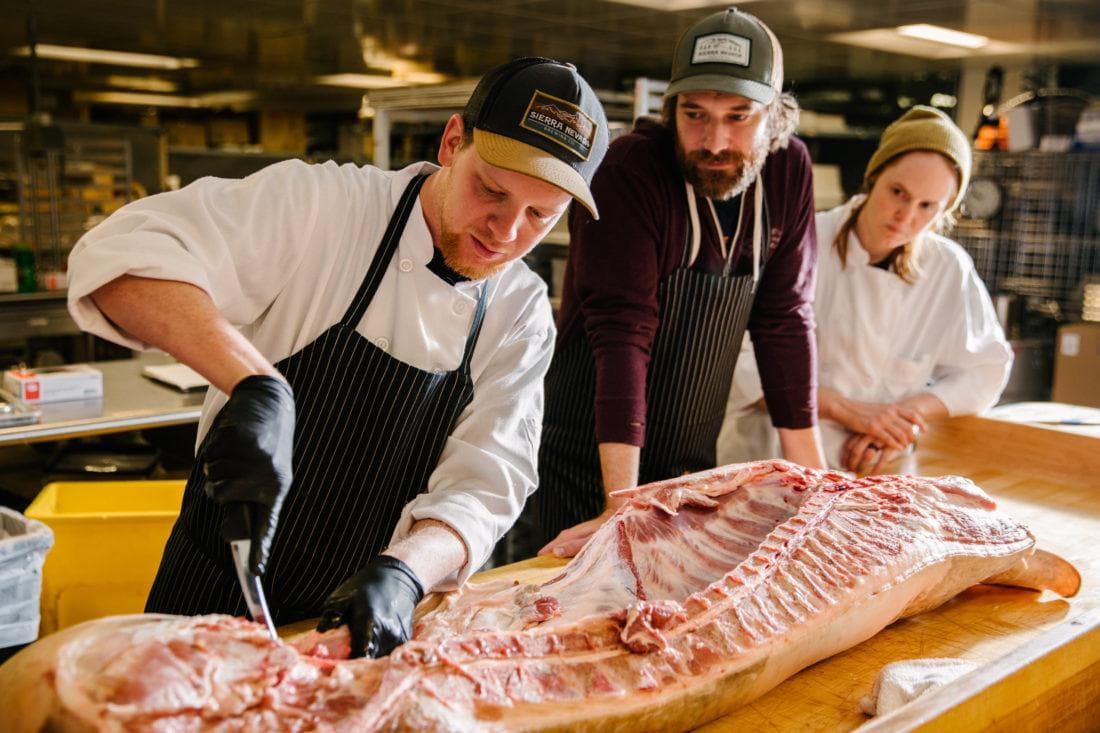
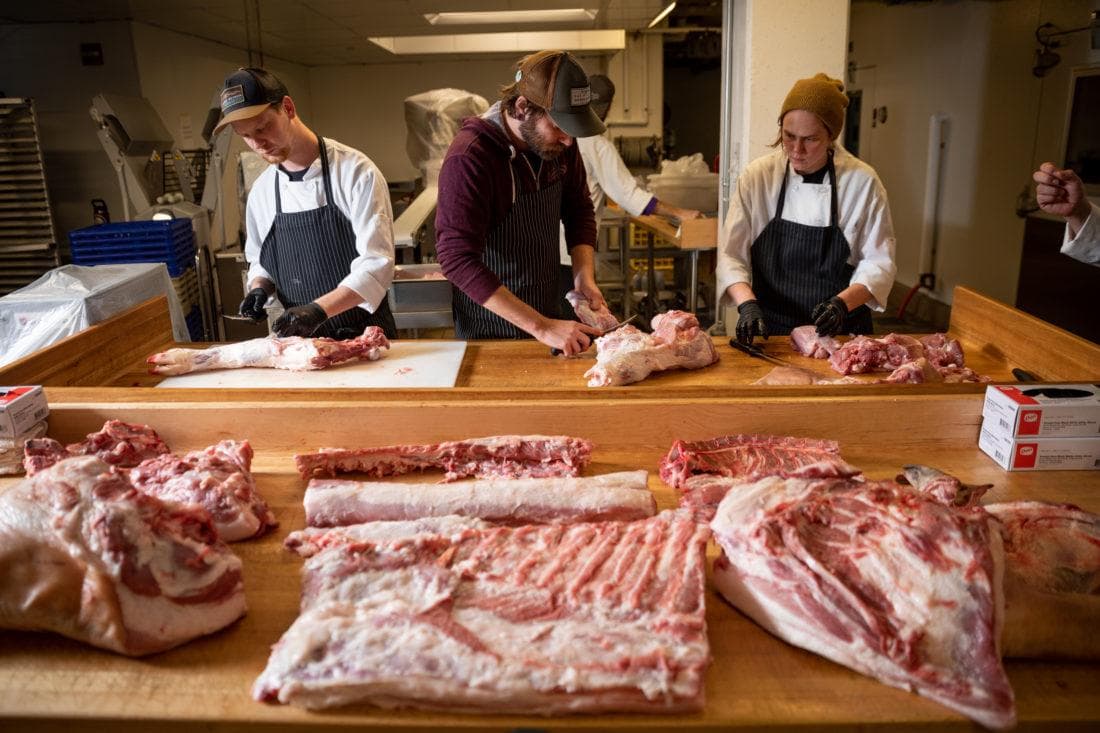
These particular hogs roamed the pasture at Vandele Farms, one hour east of our brewery. A family-owned shop, Vandele Farms makes sure working with them is personal, intimate.
Matt takes out his cell phone to dial Vandele owners Larry and Kat Crocker. He wants to double-check the hogs’ breed. Kat picks right up: you’re looking at a blend of Yorkshire, Berkshire, and Duroc.
As the students collaborate, Matt reminds them to move the hogs with care, to keep their knives sharp for smooth work.
“How’d you get through this whole pig?” Taproom bartender Gina Moore asks Matt. “My fingers are frozen!”
Gina grew up in Maui, Hawaii, and she recalls family celebrations where they roasted whole pigs. As a child, she could only watch from a distance. Today, she’s at the helm.
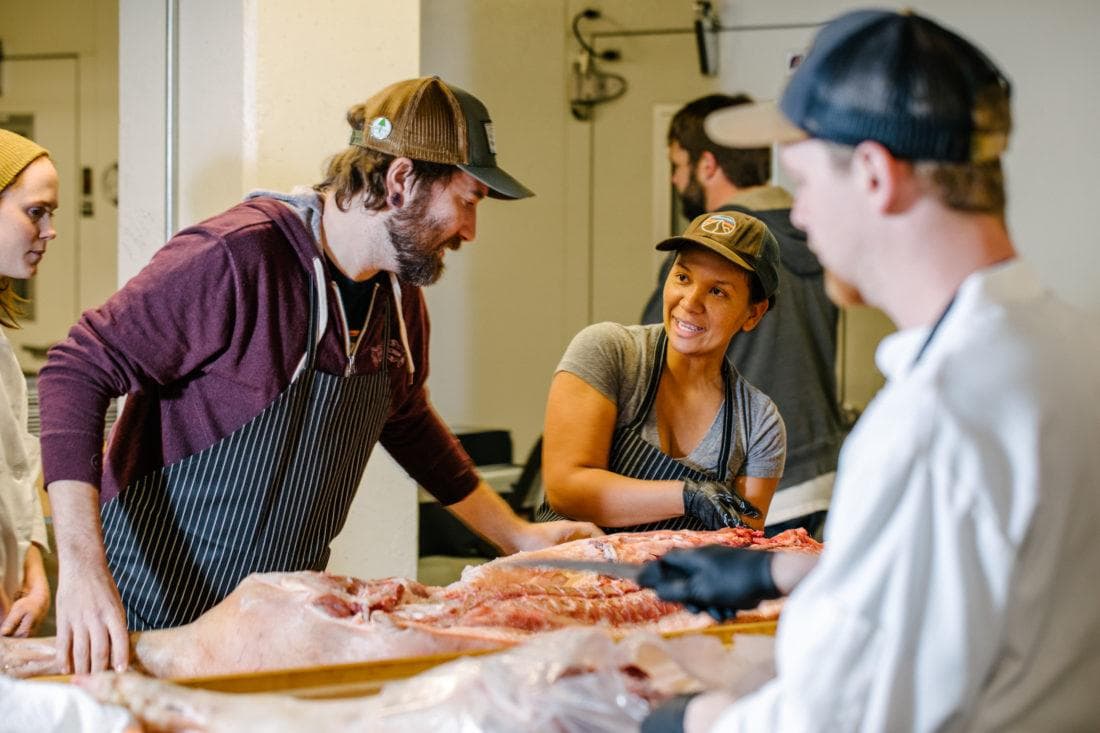
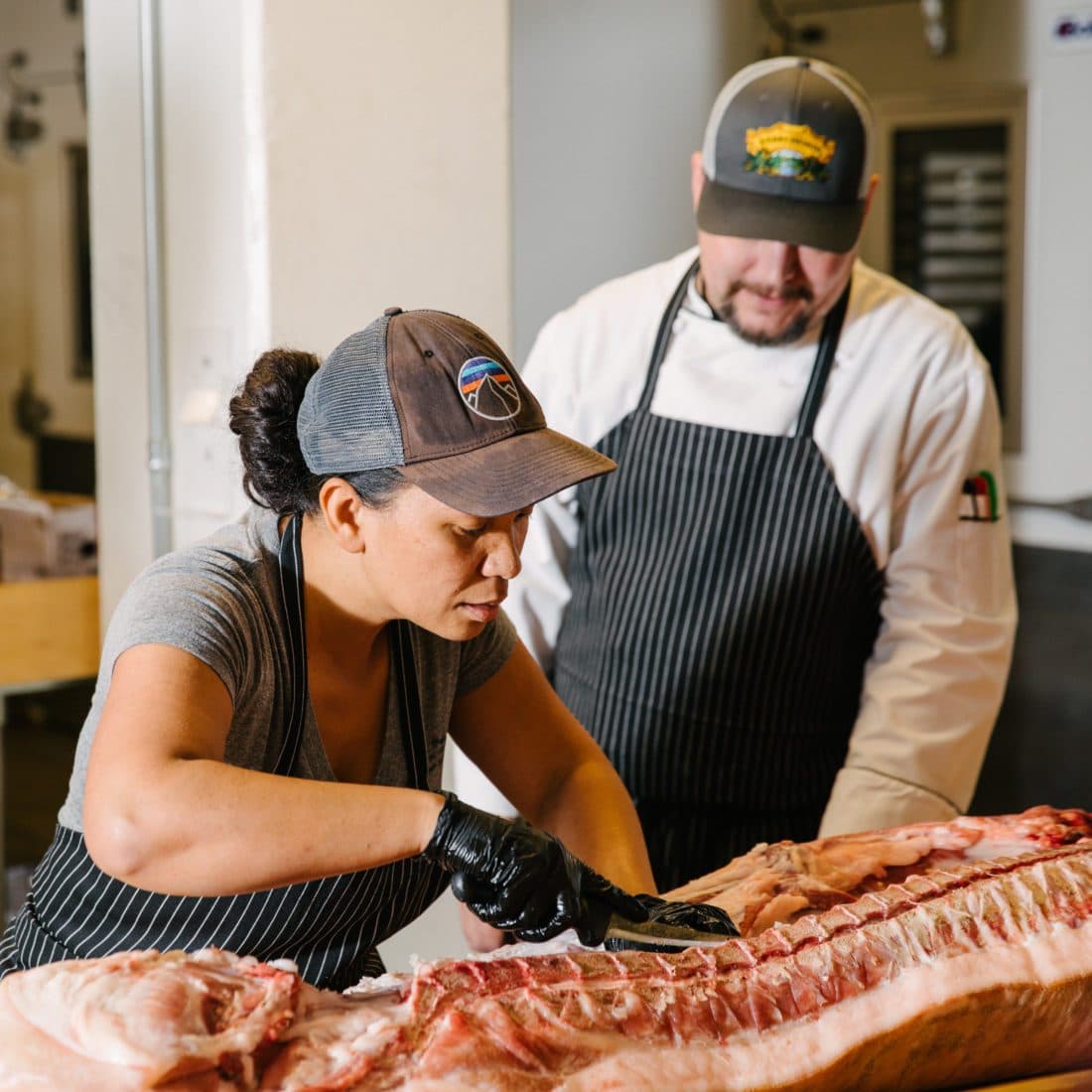
“If I make a mistake,” Gina asks, “will it just go in the sausage?”
“Yes, and we’ll scold you,” Matt jokes.
Gina shoots back, “I don’t want to be scolded!”
But mistakes are part of the mix, of course.
“The cool thing is, obviously, it’s a learning environment,” says Jessie Massie. “So if they slice the wrong spot, we’re not going to be coming down on them. We try to keep it fun.”
Much of these hogs will in fact become sausage, a constant need in the Taproom.
“We need to [make] 400 sausages every other day,” Jessie says.
On the Taproom menu right now is Brew Haus Sausage, which we infuse with beer and feature atop whipped turnips, braised greens and cherry demi-glace.
For our Cuban Pork & Beans, we brush the dish with carrot serrano sauce, then stack pinto beans, black beans and pork belly. Dots of mojo sauce, with the pep of garlic and citrus, are the final touch.
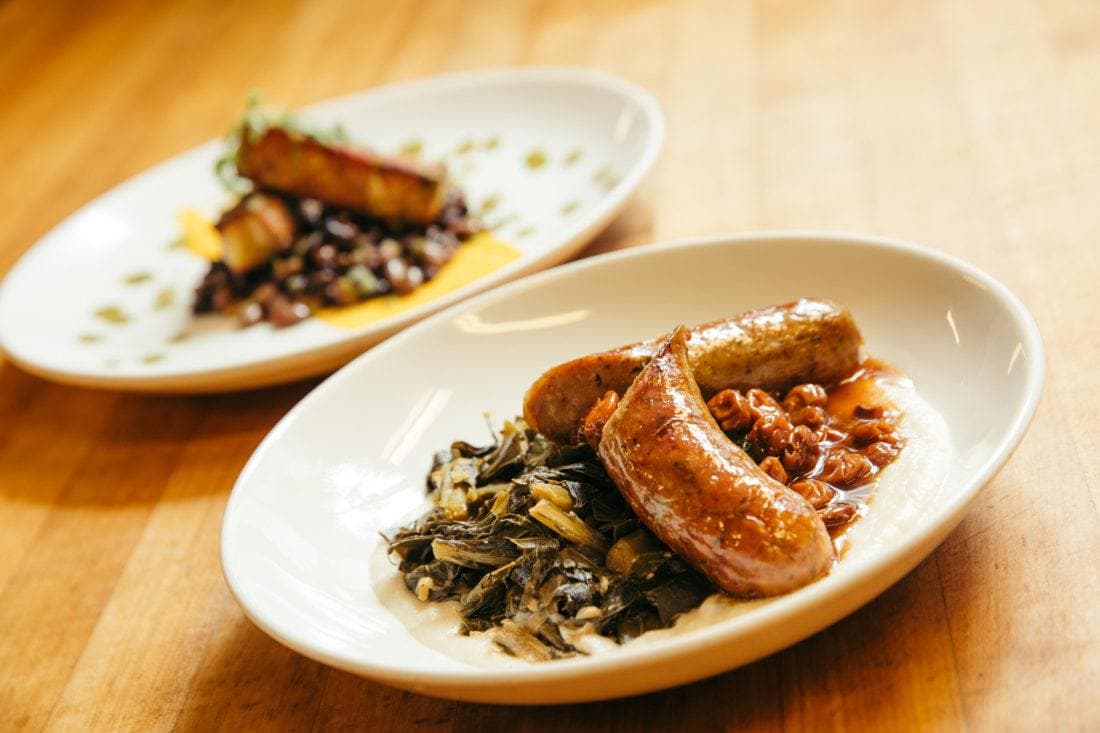
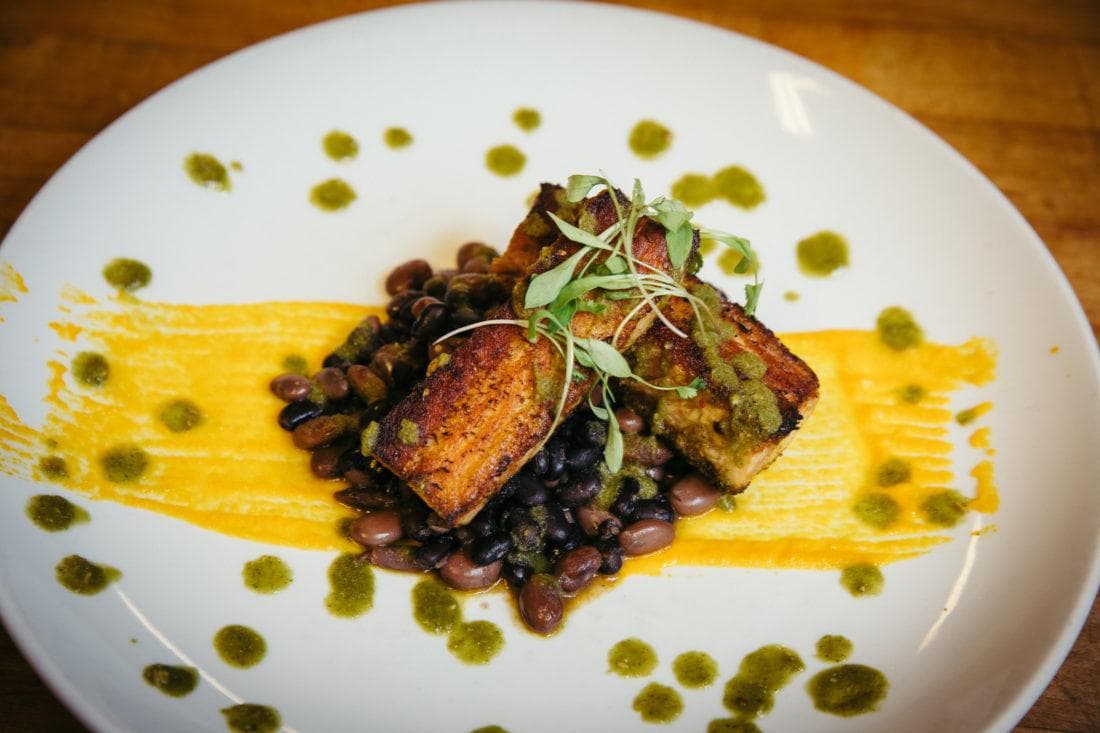
And if guests can’t clear their plates, that’s not the end of the road. We’re aggressive composters, which helps us hit 99.8% for solid waste diversion. Your scraps skip the landfill and become nutrients for the next garden harvest.
You can raise your pint to second lives, too. All that brewing grain we use—around 14,000 pounds per 200-barrel batch of Hazy Little Thing IPA—helps feed local livestock.
We imagine a Hazy treat makes for happy hogs.
